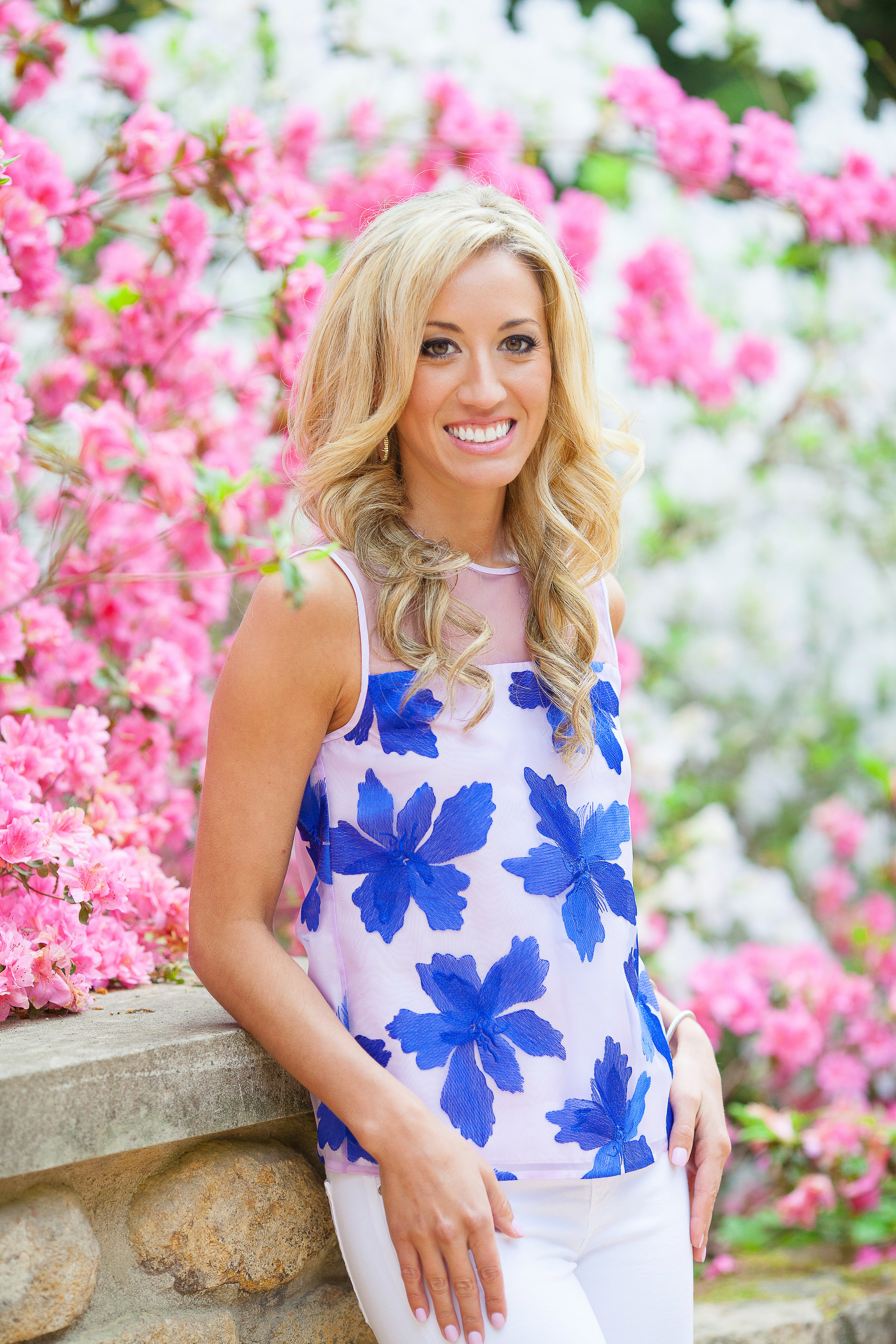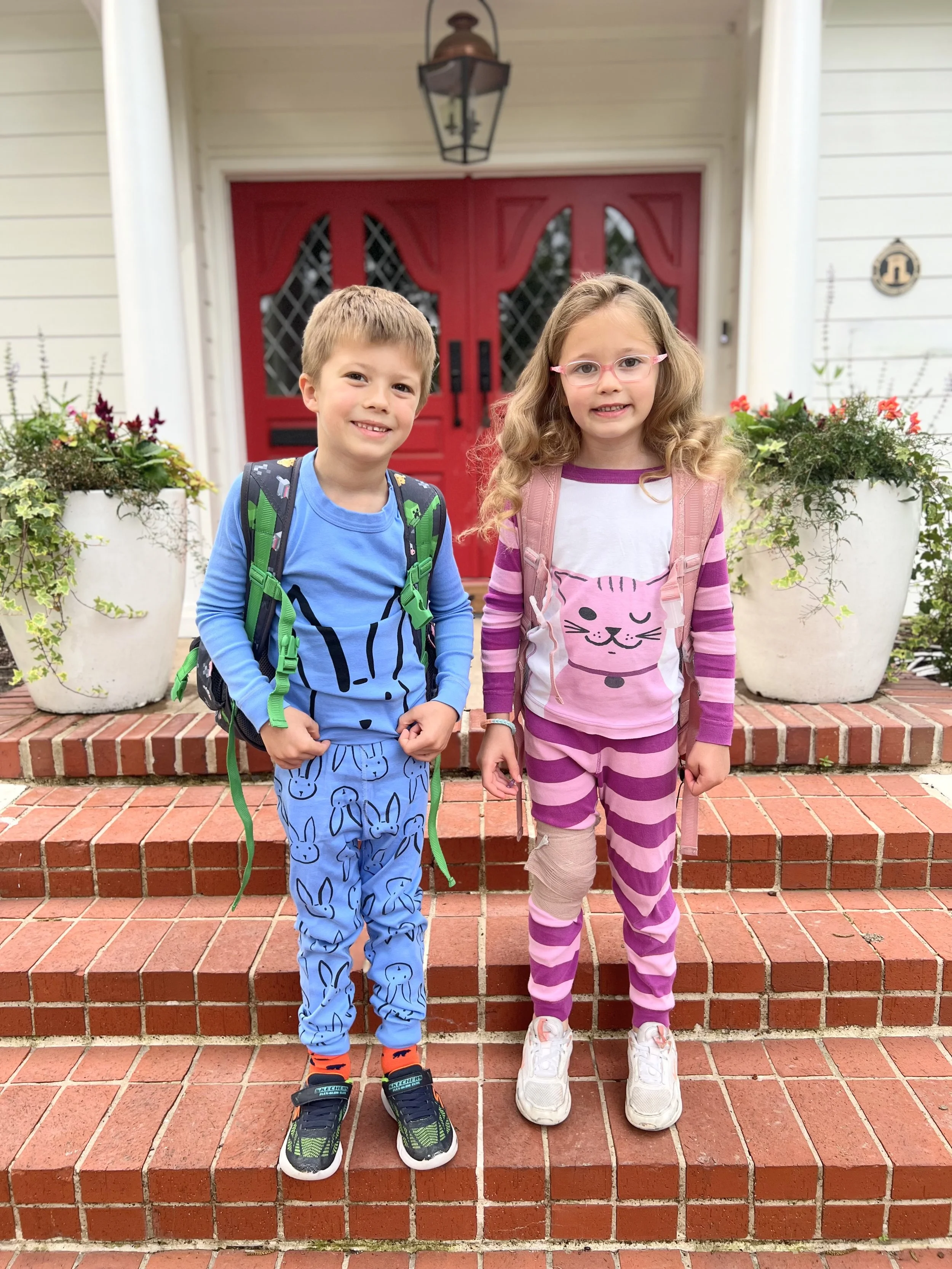10 Tips For Your Child’s Comprehensive Eye Exam
This post is sponsored by ©2023 Johnson & Johnson MedTech, but all opinions expressed are my own.
Keeping a 1-year-old calm during their first comprehensive eye exam isn’t for the faint of heart–especially when you’re not prepared! I’ll never forget the massive crocodile tears that poured down my daughter’s face that day. Joules was red in the face, sobbing, and pulling her head away from the ophthalmologist. Even as a Pediatric Nurse Practitioner myself, I wondered how in the world we would survive these visits on a regular basis.
At 12 months old, Joules was diagnosed with hyperopia (farsightedness) with accommodative esotropia (where the eye deviates towards the nose). Hyperopia affects people of all ages and is where near objects (and occasionally distant objects) appear blurry.¹ We were told that Joules needed glasses and an eye patch to strengthen her weak eye, along with frequent eye exams. It was a lot to digest as a new mom and I felt somewhat helpless. I didn’t have hyperopia and I didn’t start wearing glasses or contacts until I was in my 20’s. In fact, I had the opposite problem: myopia, a condition where distant objects appear blurry. Myopia is more than just nearsightedness; it's a chronic, progressive disease that leads to the eye growing too long.² Despite our differing eye conditions, I knew my daughter needed my help. I felt there was limited guidance on how to navigate frequent eye exams, dilations, wearing glasses and eye patches in such a young child–which is why I’ve since become a vision advocate for families.
Stories like Joules’ are not uncommon. Vision impairments are a growing problem. Globally, at least 2.2 billion people have a vision impairment.³ In fact, according to the American Optometric Association (AOA), 1 in 5 children has a vision problem and by the time they enter kindergarten, 25 percent of those children need or wear corrective glasses.⁴ We all know a child’s eyes are used constantly while in the classroom–from writing on whiteboards to reading textbooks to performing tasks on computers.
Healthy vision is critical in the classroom. But what happens if they can’t see well? Kids may squint, have difficulty concentrating on school work, complain of headaches, or experience eye pain/strain.⁵ These difficulties are all the more reason to encourage early detection in children.
With our daughter’s diagnosis coming so early in life, and now that Joules is 5 years old, we’ve had several years to learn what makes a kids’ comprehensive eye exam more comfortable–regardless of the eye health condition. And I’d love to share those tips with you–so your kid(s) can go confidently to their next comprehensive eye exam, too.

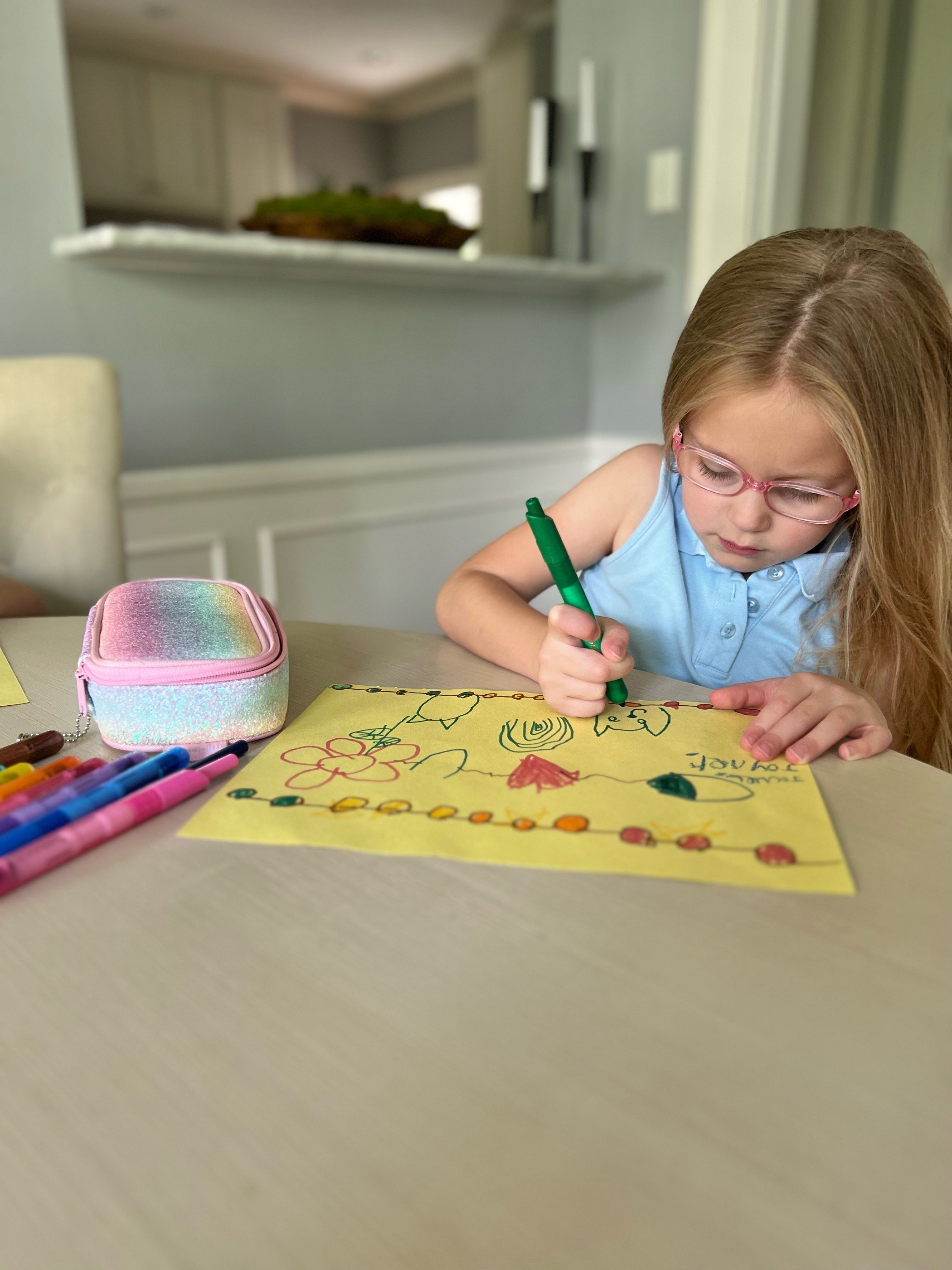
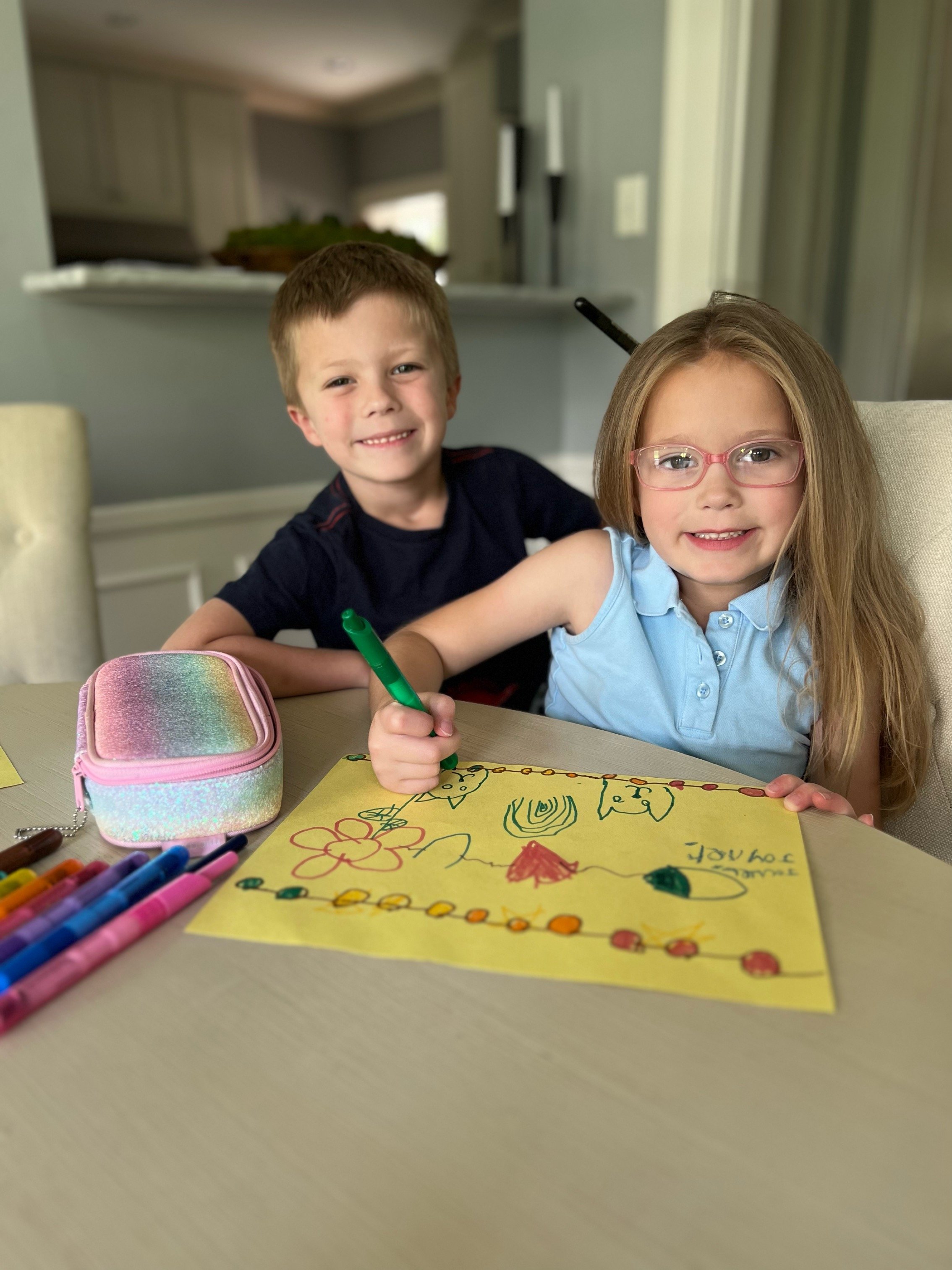
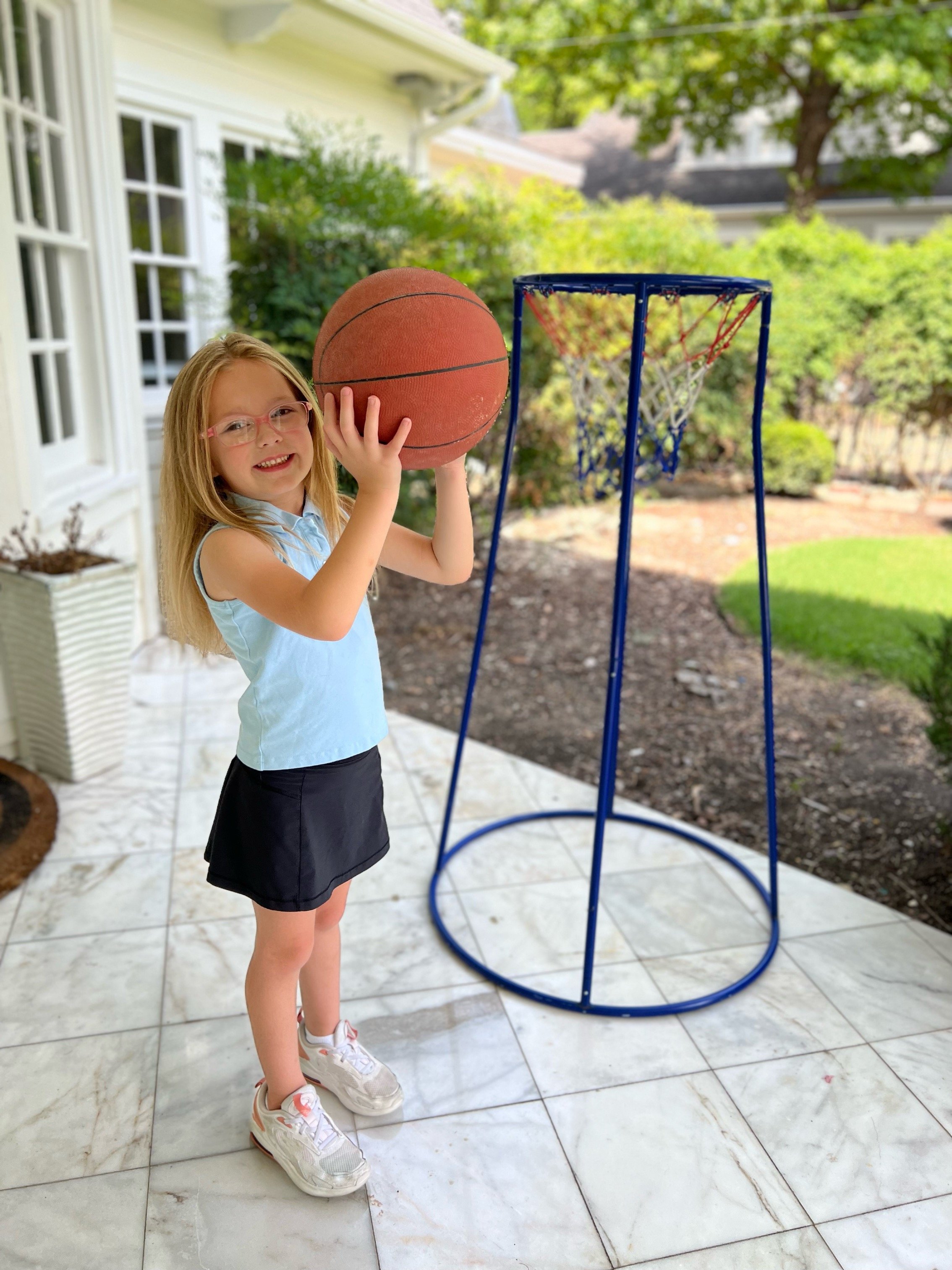
Here are my 10 tips to make your child’s comprehensive eye exam even more seamless:
1. Before the appointment, explain in simple terms what will happen at the visit–especially if it’s their first comprehensive eye exam.
So many of us—not just kids—fear the unknown. Helping your child know what to expect from start to finish can reduce any anxiety or nervousness they may be feeling. If it’s your young child’s first comprehensive eye exam, then be sure to explain the process in simple words that they will understand. For a young child, it could be something as simple as: “The eye doctor is going to shine some lights in your eyes and ask you to look at pictures, shapes, or letters and name each object–just like a game!”
2. Role play the doctor’s visit at home.
Grab their favorite teddy bear or toy and act out an eye exam together on it! Engaging in this kind of play can help your child learn about the eye exam in a fun way and act out any anxieties or fears they may have about the upcoming experience. Medical play can be tailored to fit any child’s age and learning style.
3. Bring their favorite doll to get an eye exam, too!
We often brought my daughter’s beloved stuffed animal (who we lovingly refer to as “Dolly”) to the eye care professional’s office in the beginning. Dolly would sit with Joules in the exam chair, have her eyes checked first, and even tried on' Joules’ glasses and eye patches later. Helping your child remain comfortable is key to a successful exam.
4. Help your child understand why it’s important to have eye exams. And lead by example!
Talk to your child about all the fun things you do together–such as, playing at the park, blowing bubbles, riding bikes, reading books, doing arts and crafts, etc.--and remind them that all of these activities are made possible by eyesight. To keep doing all the things we love with healthy eyes, we need comprehensive eye exams to keep our eyes healthy. And if they see you prioritizing your own eye health, too, then they may be more inclined to do the same.
5. Show them pictures/videos of other kids getting their eyes examined.
Seeing kids just like them having a good experience can help them understand that the exam is not supposed to be scary and can help reduce any fears.
6. Bring toys or other entertainment in case the office is behind schedule.
Appointments could run late and extend waiting times. If you’re not prepared, this can lead to a cranky, uncooperative patient. We like to bring books, a doll, and a snack. Plus, if your child’s eyes are being dilated, you might be waiting 30+ minutes for their eyes to be ready for the exam.
7. Make the appointment during an optimal time of day for your child.
An appointment like this is bound to go far better if your child is well-rested and not hungry. Try not to time the appointment during nap times, when they’re due for a meal, or after a long day at school. I find that mornings right after breakfast are usually best!
8. Let your kids know that you will stay with them for the entire visit.
You are your child’s sense of comfort in new experiences and unusual places! So, depending on their comfort level, let them hold your hand, sit on your lap, or be right next to you. My daughter sat on my lap for comprehensive eye exams from 1-2 years old. Since then, she’s felt comfortable enough to let me sit in a chair next to her while she sits in the exam chair alone (or with her Dolly).
9. Consider giving your child a small treat at the end.
New experiences can be stressful and require bravery! My daughter’s ophthalmologist’s office lets the kids pick out a sticker after the visit. Sometimes we also let her get a new book, pick out a small toy, or have a special snack as a reward.
10. And one of the best tips of all: bring sunglasses!
If your child’s eyes were dilated during the visit, they’ll be extra sensitive to any light. Come prepared with a pair of sunglasses for your little one to put on before walking out to the car. We usually skip any outdoor play until at least 4-6 hours after!
I’ve partnered with Johnson & Johnson MedTech to help set kids up for success by encouraging parents to schedule their kids’ comprehensive eye exams. The sooner we integrate regular comprehensive eye exams–not just for kids, but for the whole family–the sooner we can protect our eyesight. Comprehensive eye exams can be more extensive and supplement screenings at school or the pediatrician's office. Every child should be monitored for myopia–among other vision difficulties–from an early age, with annual comprehensive eye exams starting by the age of 5.²
Schedule your family’s next comprehensive eye exam and go to jjvision.com to learn more about eye health! Together we can make vision possible.
References:
hyperopia. (n.d.). The Free Dictionary. Retrieved September 19, 2023, from https://medical-dictionary.thefreedictionary.com/hyperopia Found on June 29, 2023 at https://www.jjvision.com/
Filtcroft DI. The complex interactions of retinal optical and environmental factors in myopia aetiology. Prog Retin Eye Res. 201231(6):622-660. Found on August 10, 2023 at https://www.seeyourabiliti.com/patients
World Health Organization (October 2022). Blindness and vision impairment. Found on June 29, 2023 at https://www.who.int/news-room/fact-sheets/detail/blindness-and-visual-impairment
American Optometric Association. (January 2018). AOA Advocacy Toolkit: Children’s Comprehensive Eye Exam Legislation. Found on June 29, 2023 at https://www.aoa.org/AOA/Documents/Advocacy/AOA%20Children%27s%20Vision%20Advocacy%20Toolkit%20MASTER%201.30.18.pdf
Morgan, I. G., French, A. N., Ashby, R. S., Guo, X., Ding, X., He, M., & Rose, K. A. (2018). The epidemics of myopia: Aetiology and prevention. Progress in Retinal and Eye Research, 62, 134–149. https://doi.org/10.1016/j.preteyeres.2017.09.004 https://www.hopkinsmedicine.org/health/wellness-and-prevention/how-to-know-if-your-child-needs-glasses
